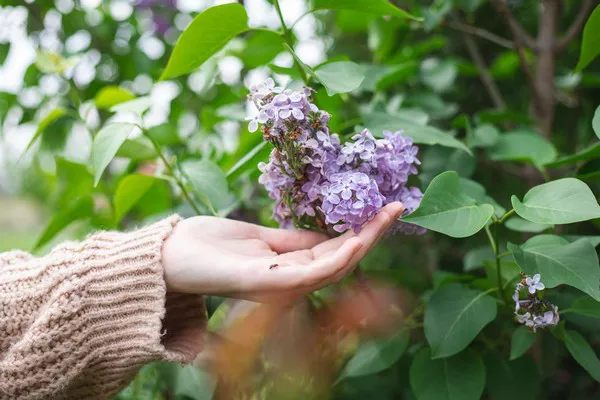Wisteria flowers, renowned for their captivating beauty and alluring fragrance, have captured the hearts of gardeners and nature enthusiasts worldwide. With their long cascades of delicate blooms, these ethereal vines create breathtaking landscapes that exude elegance and charm. In this article, we delve into the mesmerizing world of Wisteria flowers, exploring their appearance, growth patterns, species diversity, and popular cultivars. Additionally, we will discuss their cultural significance, care requirements, and the best ways to incorporate these enchanting plants into your garden.
1. A Closer Look: Wisteria Flower Anatomy
Wisteria flowers possess a unique structure that contributes to their visual appeal. The blooms are typically around 12 to 18 inches long and form in elongated clusters known as racemes. Each raceme comprises numerous smaller flowers, called florets, which can vary in color depending on the species and cultivar. Common hues include shades of purple, lavender, blue, pink, and white.
At the center of the flower is the pistil, the female reproductive part, surrounded by stamens, the male reproductive organs. The delicate petals gently unfurl from the bottom of the raceme, creating a cascading effect that evokes a sense of gracefulness.
2. Wisteria Species: Diversity and Global Distribution
The Wisteria genus includes several species, with two of the most popular being Wisteria sinensis and Wisteria floribunda. Wisteria sinensis, commonly known as Chinese Wisteria, hails from China and is celebrated for its vivid colors and adaptability to various climates. In contrast, Wisteria floribunda, or Japanese Wisteria, originates from Japan and boasts extraordinarily long racemes that can reach up to three feet in length.
Other notable species, such as Wisteria brachybotrys (Silky Wisteria) and Wisteria frutescens (American Wisteria), also contribute to the diversity of this enchanting flowering vine.
3. Cultivar Varieties: Selecting the Perfect Wisteria for Your Garden
Gardeners have cultivated numerous Wisteria cultivars over the years, each offering distinct characteristics and visual delights. Among the most popular cultivars are:
Wisteria floribunda ‘Alba’: Known for its pristine white blooms, this cultivar adds an air of elegance and purity to any garden.
Wisteria sinensis ‘Blue Sapphire’: Displaying deep violet-blue flowers, ‘Blue Sapphire’ is a breathtaking variety that creates a striking focal point.
Wisteria floribunda ‘Rosea’: This cultivar features soft pink blooms, adding a touch of subtlety and romance to garden landscapes.
Wisteria sinensis ‘Prolific’: As the name suggests, this cultivar produces an abundance of cascading violet flowers, creating a captivating spectacle.
4. The Symbolism and Cultural Significance of Wisteria
Beyond their aesthetic value, Wisteria flowers hold rich symbolism in various cultures. In traditional Japanese culture, Wisteria is regarded as a symbol of love, sensuality, and endurance. It is often featured in art, literature, and poetry, evoking emotions of longing and beauty. Similarly, in China, Wisteria is associated with immortality and longevity, making it a popular motif in paintings and decorative arts.
In Western cultures, Wisteria is commonly associated with nostalgia, grace, and romance. It is often used to evoke a sense of classic beauty in gardens and architectural structures.
5. Planting and Caring for Wisteria: Tips for Success
Growing Wisteria requires careful consideration of its requirements and growth habits. Here are some essential tips for planting and caring for these enchanting vines:
Location: Wisteria thrives in full sunlight, so choose a location in your garden that receives at least 6 hours of direct sunlight each day.
Support Structure: Wisteria is a vigorous climber, so it needs a sturdy support structure, such as a trellis, arbor, or pergola, to grow properly.
Soil: Well-draining soil is crucial for Wisteria’s health. Ensure the soil is fertile and moist but not waterlogged.
Pruning: Regular pruning is essential to control the growth and promote flowering. Prune the vine in late winter or early spring when it is dormant.
Propagation: Wisteria can be propagated through seeds or stem cuttings. However, keep in mind that seed-grown plants may take several years to flower.
Pest and Disease Management: Monitor the plant regularly for pests like aphids and caterpillars, as well as diseases such as powdery mildew. Implement appropriate control measures if needed.
6. Landscaping with Wisteria: Creative Ideas
Integrating Wisteria into your landscape design can elevate the overall aesthetics of your garden. Consider the following creative ideas:
Pergola Paradise: Train Wisteria vines to grow over a pergola, creating a stunning shaded area adorned with vibrant blooms.
Archway of Dreams: Plant Wisteria on arches or arbors, transforming them into captivating passageways that lead to hidden corners of your garden.
Tree Entwining: Allow Wisteria to climb and wrap around sturdy trees, turning them into living sculptures of natural beauty.
Terrace Trellis: Adorn your terrace or balcony with potted Wisteria plants trained to grow along trellises, infusing your outdoor space with charm and elegance.
Conclusion
Wisteria flowers, with their cascading racemes and enchanting colors, embody the essence of natural beauty and have captivated gardeners and enthusiasts for generations. From their unique flower anatomy to their cultural significance and care requirements, Wisteria remains an enduring symbol of grace and elegance in gardens worldwide. By selecting the perfect cultivar and incorporating creative landscaping ideas, you can experience the captivating allure of Wisteria in your own outdoor oasis. So, whether you seek to evoke nostalgia, romance, or a touch of Eastern mystique, Wisteria is a splendid choice that will never cease to amaze and delight.


